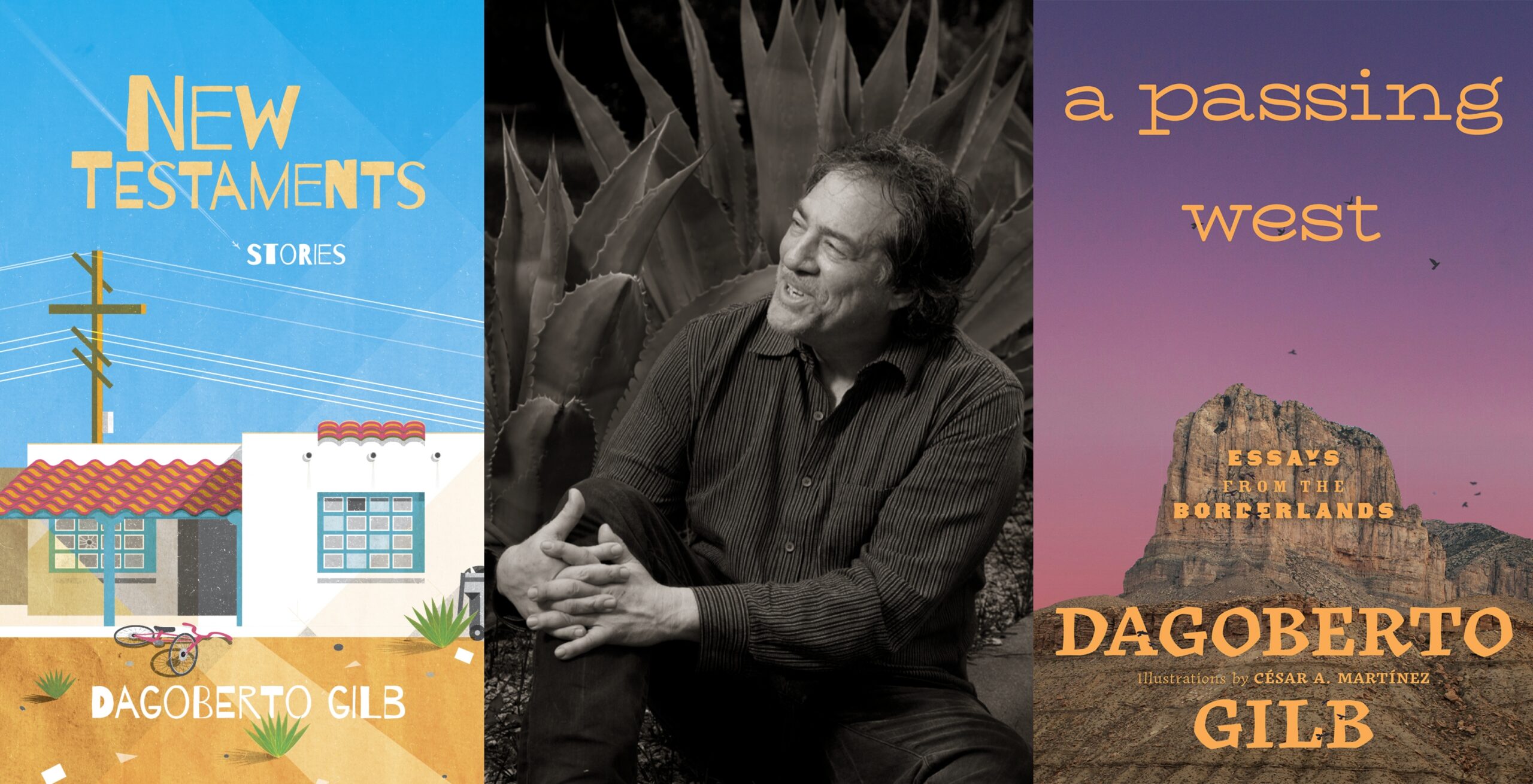Listen to the Prophet
State Demographer Steve Murdock says we have a choice about our future, if we act now
In the 1990s, Texas grew at a rate that was approximately equal to adding another Houston, plus another Dallas, plus another San Antonio, plus another Corpus Christi. The growth spurt continues today, booming most along the Texas-Mexico border, the central corridor from Dallas-Fort Worth to San Antonio, and in the Houston-Galveston area. In the 1990s, Dallas-Fort Worth alone added 1.2 million people—more growth than was experienced by 45 of the 50 states. The population increase is greatest among non-Anglos. In family households, it is the single-parent families that are growing the fastest. By 2030, Texas will have a younger and more diverse population than most of the United States. Elderly Texans will tend to be Anglos. Younger Texans—those in their most productive work years—will be overwhelmingly non-Anglo.
The above statistics come from state demographer Steve Murdock via the U.S. Census.
Murdock is much more than a number-cruncher. He is a prophet, fervently spreading his message to civic clubs, teachers, the media, and politicians: It is still not too late to change the destiny behind our demographics. What Texas will look like in 2030 is clear. The quality of life its citizens will experience is still being decided—right now. Murdock calls it the Texas Challenge.
If current trends persist, by 2040 a whole host of alarming statistics will be much, much worse. In 2000, the average income for African-American and Hispanic households in Texas was less than two-thirds of that of Anglos. The average female-headed household in Texas had an income of less than $25,000. Today, educational attainment is faltering and the demand for welfare and subsidized health care is growing. This is all happening to the workforce of tomorrow.
Following these trends, by 2040 wages will be even lower and the median income will drop from $39,927 to $33,191 in 2000 constant dollars. Even as the tax base shrinks, demand for services will grow. By 2040, the number of people depending on grants under the Temporary Assistance for Needy Families program is expected to rise 148.9 percent. Medicaid use will rise 181.9 percent. The percentage of Texans without a high school diploma will rise from 18 percent to 30 percent. The prison population will increase by 124.4 percent. No matter how high the well-off build their walls, they won’t be able to escape the poverty that surrounds them.
But it doesn’t have to be that way, if Texans demand that their policymakers be more proactive. To this end, Murdock crisscrosses the state speaking about the future to anyone who will listen.
“What I generally tell people is that my desire is that everything we project to occur ends up being false,” says Murdock. “I’d like to be 100 percent wrong in terms of what happens.”
And while Murdock insists he does not make policy but simply provides information, his numbers have become an important reference point in the political debate on issues such as education, tax policy, and the social safety net. The most notable recent example is the ruling by state Judge John Dietz late last year on the school finance case. Dietz ruled that Texas needs to spend more on education. (The ruling is currently on appeal before the Texas Supreme Court.) In his opinion, Dietz cited Murdock’s research, which had been entered into evidence.
Recently the Observer met with Murdock is in his small office in the state Capitol complex. Of medium build and height, Murdock values precision in his speech, cautiously avoiding stepping beyond the facts at hand. Originally from Milnor, North Dakota (population 690 and dropping), his understated demeanor renders the facts he presents that much more powerful. He shuttles between Austin and San Antonio, where the Texas State Data Center, a network of 46 university, state, regional, and municipal agencies that coordinate demographic and socioeconomic information, is located. Last year, Murdock outgrew his long-time position at Texas A&M, where he was chairman of the school’s Department of Rural Sociology. He left College Station to accept the Lutcher Brown Distinguished Chair in Management Science and Statistics at the University of Texas–San Antonio.
The demographer talked about the numbers, the trends, and how people around the state have been receiving them. What follows are excerpts from that conversation.
The Texas Observer: Isn’t Texas a frontrunner in a demographic change that will impact the country as a whole?
Steve Murdock: If you live in Texas and you want to know what the United States of America that your children or grandchildren—depending on your age—will [inherit], all you have to do is look around. The Census Bureau recently came out with some projections that the Texas of today is the U.S. of tomorrow. They projected that by 2040, the U.S. population will be 53 percent Anglo and 47 percent non-Anglo. In 2000, Texas was 53 percent Anglo and 47 percent non-Anglo.
We are such big players in the sense of diversity. [In the nation in 2000] we had the third-largest Anglo population (non-Hispanic white); the second-largest African-American; the second-largest Hispanic; the fourth-largest “other” (primarily Asian but [the number] also includes Native Americans and some others). And if you look at us in the last couple of decades, we’ve been either the second- or third-largest contributor to those populations.
So we had, for example, the second-largest increase in Anglo population in the country in the 1990s, with 783,000 Anglos. Only Florida with 1.1 million had a greater number. We were also second in the increase in our Hispanic population at 2.3 million people.
The diversity is not a California, Texas, New York, Florida kind of phenomenon. It’s increasingly national. All 50 states in the 1990s had faster growth in non-Anglo population groups than Anglo. All 50.
Diversity… is [also] not only a central-city phenomenon in Texas. It’s a suburban phenomenon in Texas. In the suburbs 4 out of every 10 net additions in the ’90s were non-Anglo. In a majority of rural areas in Texas there would be no growth if it were not for the Hispanic population. For example, there are 68 counties in the state in the 1990s that lost population and all of them are rural. If you [removed] Hispanic population growth, [from that equation] there would have been 92 declining rural counties.
TO: In addition to the diversity of our population, what else do you talk about in your presentations?
SM: We talk about the aging of the population. And most people know about that because they see it in newspapers. They see it on television. And I point out two aspects: We’re getting, in an aggregate sense, relatively older, because of the baby boomers—those people born from ’46 to ’64. The first of the baby boomers do not turn 65 until 2011. Starting then we get very rapid aging. From [19]90 to 2000 the proportion of our population 65 [and up] actually went down, in both the country and in Texas. But long-term it is a significant phenomenon.  There is a clear relationship between non-Anglo status and youth status. For example, I usually point out that if you take the population that is 65 [and up]—73 percent of that population is Anglo—17 percent is Hispanic. The other 10 percent is African-American, Asian, etc. You go to the other end of the age spectrum, less than 5 [years old]—40 percent is Anglo, 44 percent is Hispanic—60 percent in total is non-Anglo. In the 2000 Census, if you took the population that was less than 18 years of age, 57 percent of that population was non-Anglo.
There is a clear relationship between non-Anglo status and youth status. For example, I usually point out that if you take the population that is 65 [and up]—73 percent of that population is Anglo—17 percent is Hispanic. The other 10 percent is African-American, Asian, etc. You go to the other end of the age spectrum, less than 5 [years old]—40 percent is Anglo, 44 percent is Hispanic—60 percent in total is non-Anglo. In the 2000 Census, if you took the population that was less than 18 years of age, 57 percent of that population was non-Anglo.
TO: So unlike most other states, our population is going to expand quite a bit by 2030?
SM: Unless a bunch of we middle-aged people decide to die off early, it’s in the cards, there’s no reversing that. One of the reasons it’s really likely is because 200,000 of our growth every year is natural increase. What people don’t understand sometimes is how phenomenal that is. If we had no other growth in the 1990s except for natural increase—nobody moved here from other states—nobody moved here from other countries—we’d still be the third-fastest-growing state in numerical terms just from our natural increase. So I think we’re likely to grow.
The other thing is: Look at the diversification. We thought, for example, in our last projections that came out, that sometime in 2004 and 2005, Texas would be less than half Anglo. We thought that until the Census Bureau showed us that by 2003 we had become less than half Anglo.
So when you look at that reality, what do you do about it? Do you try to pretend it won’t happen? We know in a sense, it’s already happened with us. It’s happened in California, in Hawaii, New Mexico, a number of states. It’s growing.
People say to me, “Isn’t what we’re going to be in 2040, isn’t that unusual, or isn’t that strange?” or something of that nature. And I usually say no. It’s where we’ve been that’s been unusual. We’ll look a lot more like the world in 2030 or 2040 than we do today. In both Texas and the United States as a whole. And so, it’s not so much that I’m advocating plurality, it is a reality that there will be a plurality. What’s not a certainty is the nature of that interaction and the nature of the financial conditions that will be evident for different groups. That’s something much more difficult to predict.
TO: What are the implications for the future based on these numbers?
SM: If you grow in the matter and form that we’re projected to grow and don’t change the income differences, for example, between Anglos and African-Americans or Hispanics, or the educational differences, the reality is that Texas in an aggregate sense, becomes poorer. In 2000 constant dollars, the average Texas household in 2040—if you didn’t change anything—would be $6,500 poorer in 2000 constant dollars than the average household in 2000 was.
In 2000, 30 percent of Anglos, 15 percent of African-Americans, and 8.9 percent of Hispanics had a college degree in Texas. Okay, if you don’t change those [numbers] you get the kinds of things we’ve been talking about. But what happens if we make as much progress as we did in the 1990s [when] there was some clear evidence of progress in educational attainment? For example, the proportion of African-Americans with a high school degree went up by almost 10 percent, which is phenomenal. Now, it was less dramatic for Hispanics, partly because of immigration. Immigrants—whether they were Irish 200 years ago or others 150 years ago, or Hispanics today—tend to come and be poorer and less well educated.
TO: In the past, immigrants worked their way into the middle class. Is it different today?
SM: The nature of the economy in which Irish, Italians, and others assimilated was one with high demand for manual labor, where you could go from manual labor into other kinds of jobs and progress. There are fewer of those kinds of jobs today. There are a lot of manual labor jobs but the steps forward seem to be fewer in number for those with the least levels of education. So it may require some additional generational adjustments.
TO: Well, given the demographic constants—and just imagine yourself king of the world here—what would be the ideal vision that you would have for Texas in 2040?
SM: What we try to show very clearly is that because of the numbers, the conditions for groups become the conditions for the state. So we’re looking at 2040 and we’d like to see a situation in terms of the state’s welfare where the incomes for African-Americans and Hispanics have increased. Now, it doesn’t mean we want anybody else’s to decrease. Simply look at the numbers. By 2040 somewhere between 65 percent and 75 percent of the state’s population will be non-Anglo. And so if income differences don’t change, we think it’s not an exaggeration to say we’ll be poor and less competitive.
If, in fact, we could have those income levels the same, we could be very competitive because we’d be a younger population, a younger labor force. And of course a lot of these issues are related to poverty. In terms of service needs that come along with reduced public resources, that would be decreased as well. We look at 2040, we’d like a society in which there was greater income, greater development, if you will, for all racial and ethnic groups. We say that the Texas challenge is really to ensure that all Texans have the skills and education necessary to be competitive in what we know is an international economy. It will help them, but it’s also essential to the state, both in terms of having service levels that [it] can accommodate and in terms of having resources in order to pay for such services.
TO: I know creating policy is not part of your job description but the current leadership of the state has proven itself unwilling to invest in social services like education and health care for the population. Coupled with the demographic changes on the way, isn’t that a mistake?
SM: Our elected people tend to reflect what our values are. And I say sometimes at the end of my speech—“Now, remember this is me talking, I’m not representing anybody. It’s not anyone’s view but mine”—but I say, “you know, that among the values in Texas is to be a low-tax and a low-expense state.” And I think most Texans would agree with that. If you’re going be low taxes and you’re going be low expenditures, then of course, you have to pick and choose what it is that you’re going to develop. And so, it’s not just what political leaders do. Our political leaders do what we want them to do at least in general part. We have to look back at ourselves.
TO: As you go around the state, what kind of response are you getting to your presentations?
SM: Well, it’s changed a lot over the past 25 years that I’ve been talking about this. Twenty-five years ago a lot of people didn’t believe this was going to happen. Virtually no one will say today, “We’re not going to be diverse. We’re not getting older.” So I think there’s a lot more acceptance.
I think the reactions run somewhat to what you’d expect. That is, there’s some who look at it and say, “What should we do to address this?” There are some who say, “I’m going to wall myself off. I’ll find a place where I can live and forget about all this, I don’t want to deal with it.” Those are probably the two most common. And the third set really says, “I see what it is but you can’t do a thing about it. It’s going happen. What do we do?” In other words, they’re not as activated to look for alternatives to do things. They just feel like it’s overwhelming. I’d say those are the most frequent reactions these days. Twenty-five years ago many people said, “You’re just wrong.”
Certainly the number of people that are interested in doing something about it has increased
ver the years. The
increasingly see their fate is tied. And one of the things that we try to show in our work—and this goes back to the individual versus the group phenomenon—is the extent to which all Texans’ fates are tied to the changes that occur and how we handle them.
By [20]23 or [20]24, we’re talking about three out of every four Texas workers being non-Anglo. I like to say, well, if I, as an aging Anglo, forget that the quality of services I’m going to have—fire, police, and other services—depend on how well primarily the working-age population is doing, I really do so to my own detriment. Our fates are intertwined and related. How well our non-Anglo citizens do in Texas is how well Texas will do.


